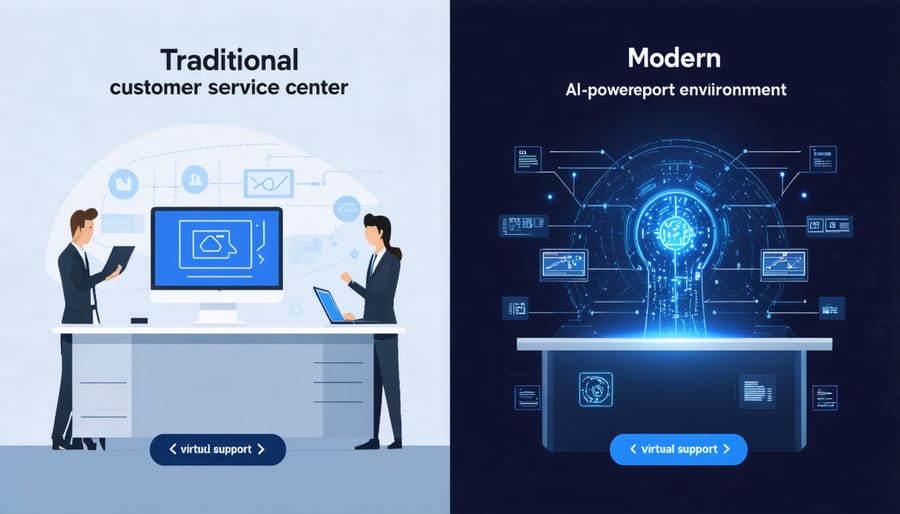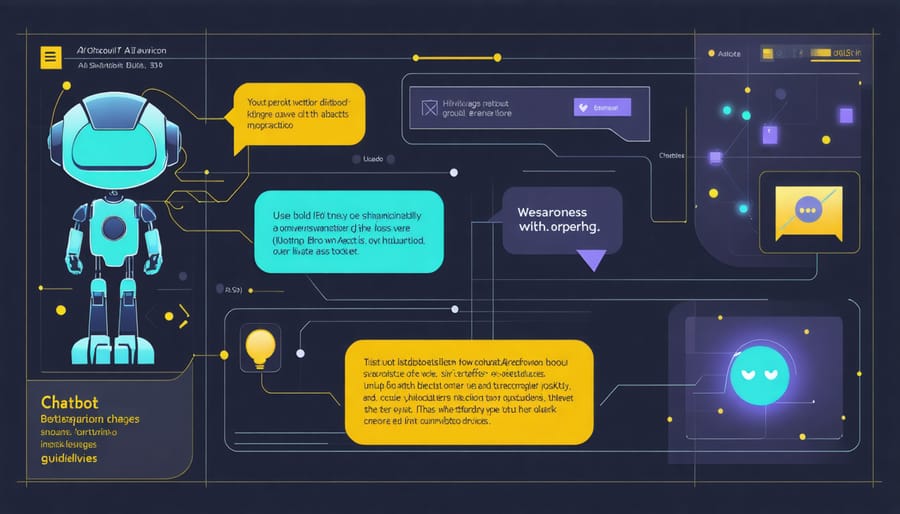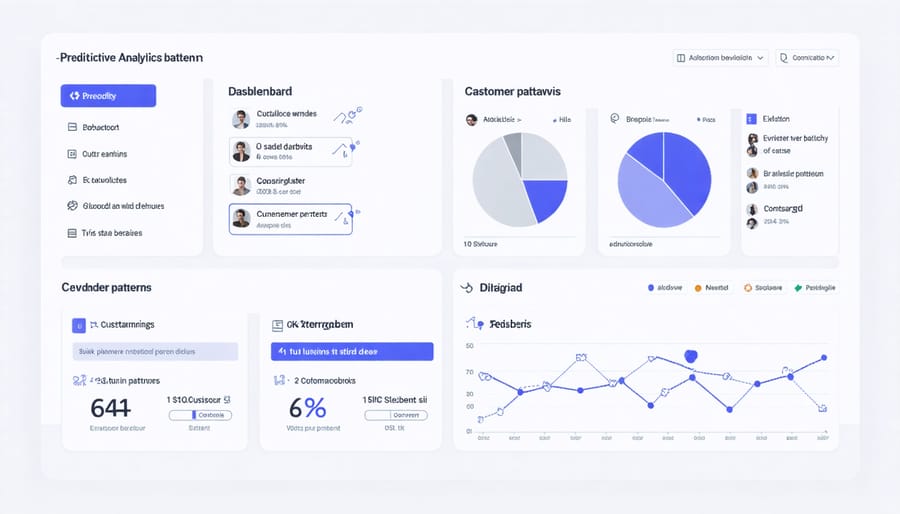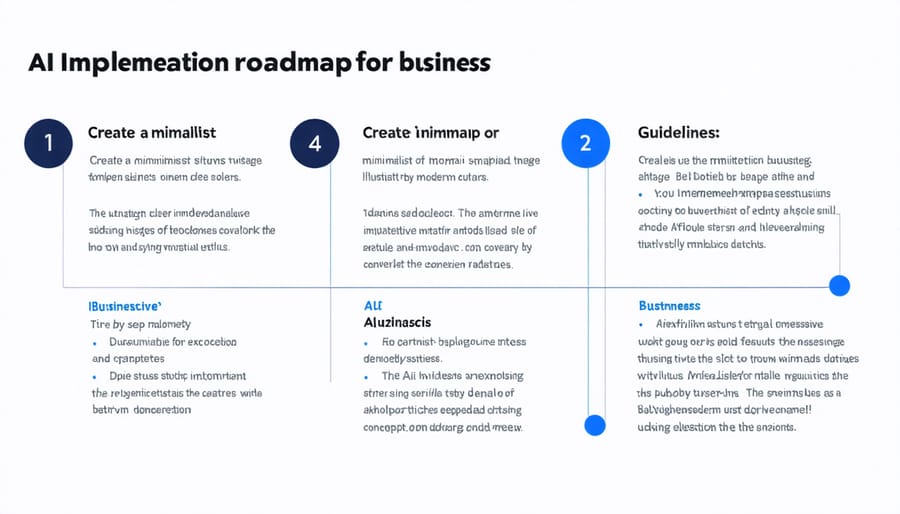Digital transformation isn’t just about implementing new technologies—it’s about fundamentally reimagining how businesses connect with their customers in the digital age. Today’s consumers expect seamless, personalized experiences across every touchpoint, making the intersection of digital transformation and customer experience the new battleground for business success.
Studies show that companies leading in digital customer experience generate 3x more revenue than their competitors, yet 84% of organizations struggle to fully integrate digital solutions with their customer journey. This gap represents both a challenge and an unprecedented opportunity for forward-thinking businesses.
The real power of digital transformation lies in its ability to create hyper-personalized customer experiences that adapt in real-time. From AI-powered chatbots that provide 24/7 support to predictive analytics that anticipate customer needs before they arise, technology is enabling companies to deliver the right message, to the right customer, at precisely the right moment.
As we navigate through this digital revolution, one thing becomes crystal clear: organizations that successfully merge digital innovation with customer-centric strategies aren’t just surviving—they’re thriving. The key is understanding that digital transformation isn’t a one-time project but a continuous journey of evolution, driven by ever-changing customer expectations and technological capabilities.
The New Era of AI-Powered Customer Interactions
From Traditional to AI-Enhanced Customer Service
Traditional customer service relied heavily on human agents handling phone calls, emails, and in-person interactions, often resulting in long wait times and inconsistent service quality. Today, AI-enhanced customer service represents a dramatic shift in how businesses interact with their customers, offering 24/7 availability and personalized experiences at scale.
Modern AI solutions like chatbots and virtual assistants can handle routine inquiries instantly, freeing human agents to focus on complex issues that require empathy and critical thinking. These systems learn from each interaction, continuously improving their responses and becoming more efficient over time.
The transformation goes beyond simple automation. AI-powered systems can analyze customer sentiment, predict issues before they escalate, and provide personalized recommendations based on historical data. For instance, when a customer contacts support, AI can instantly access their complete purchase history and previous interactions, enabling more contextual and meaningful assistance.
This hybrid approach, combining AI efficiency with human expertise, has shown impressive results: reduced response times by up to 80%, increased customer satisfaction scores, and significant cost savings for businesses while maintaining the personal touch that customers value.

Key Technologies Driving the Transformation
Several groundbreaking technologies are revolutionizing how businesses interact with their customers. Artificial Intelligence and Machine Learning lead the charge, powering personalized recommendations and predictive analytics that anticipate customer needs before they arise. Chatbots and virtual assistants, enhanced by Natural Language Processing, now handle complex customer queries with remarkable human-like understanding.
Cloud computing enables seamless omnichannel experiences, allowing customers to switch between devices while maintaining conversation context. Advanced analytics tools process vast amounts of customer data in real-time, providing valuable insights for service improvement and personalization.
Voice recognition technology has matured significantly, making voice commerce and hands-free customer service increasingly popular. Augmented Reality (AR) and Virtual Reality (VR) are transforming product visualization and customer support, letting customers try before they buy or receive guided assistance remotely.
The Internet of Things (IoT) creates connected experiences, with smart devices gathering customer behavior data to enhance service delivery. These technologies, working in concert, create a more intuitive, responsive, and personalized customer journey that meets modern consumers’ expectations for instant, seamless interactions.
Real-World Applications of AI in Customer Experience
Intelligent Chatbots and Virtual Assistants
Intelligent chatbots and virtual assistants have revolutionized customer support by providing instant, 24/7 service while significantly reducing operational costs. These AI-powered solutions use natural language processing to understand customer queries and deliver contextually relevant responses, creating seamless interactions that feel remarkably human-like.
Modern chatbots can handle multiple tasks simultaneously, from answering frequently asked questions to processing returns and scheduling appointments. For instance, when a customer contacts support about a delayed shipment, the chatbot can instantly access order details, provide real-time tracking information, and offer solutions without human intervention.
The technology has evolved beyond simple rule-based responses. Today’s AI assistants learn from each interaction, continuously improving their ability to understand context, emotion, and intent. They can switch between multiple languages, maintain conversation history, and escalate complex issues to human agents when necessary.
Companies implementing these solutions typically see a 25-40% reduction in support tickets and improved customer satisfaction scores. Bank of America’s virtual assistant, Erica, handled over 100 million client requests in its first two years, demonstrating the scalability of this technology.
For optimal results, businesses should focus on creating a balanced hybrid approach, where chatbots handle routine inquiries while human agents manage complex issues requiring empathy and critical thinking. This combination ensures efficient service delivery while maintaining the personal touch that customers value.

Predictive Analytics for Customer Behavior
In today’s data-driven marketplace, AI-powered business analytics are revolutionizing how companies understand and anticipate customer behavior. By analyzing patterns in historical data, browsing habits, and purchase history, businesses can create highly accurate predictions about future customer actions and preferences.
Modern predictive analytics solutions can identify when a customer is likely to make a purchase, what products they might be interested in, and even when they’re at risk of churning. For example, an e-commerce platform might notice that customers who browse certain product categories without purchasing often return within 48 hours if sent a personalized discount code.
These systems continuously learn from each customer interaction, creating increasingly accurate behavior models. A retail bank might predict when customers are likely to need a loan based on their spending patterns and life events, allowing them to make timely, relevant offers.
The real power lies in combining multiple data sources. By analyzing social media activity, website behavior, purchase history, and customer service interactions, businesses can create comprehensive customer profiles that enable truly personalized experiences. This might mean adjusting website content in real-time, customizing email marketing campaigns, or alerting customer service representatives to potential issues before they arise.
Success in predictive analytics requires a balance between technological capability and customer privacy, ensuring that personalization enhances rather than intrudes upon the customer experience.

Personalization at Scale
Today’s customers expect experiences tailored to their preferences, behaviors, and needs across every touchpoint. AI-powered personalization makes this possible at scale, transforming how businesses connect with millions of customers individually.
Machine learning algorithms analyze vast amounts of customer data – from browsing patterns and purchase history to social media interactions and support tickets – to build comprehensive customer profiles. These profiles enable businesses to deliver highly relevant content, product recommendations, and communications automatically.
For example, leading e-commerce platforms use AI to customize everything from homepage layouts to email marketing campaigns for each visitor. The system might show a customer who frequently browses athletic wear more sports-related products, while presenting formal wear to someone shopping for business attire.
Beyond product recommendations, AI enables real-time personalization of customer interactions. Chatbots and virtual assistants can reference past conversations and known preferences to provide contextually relevant support. Marketing automation tools can determine the optimal time, channel, and message for each customer.
The results speak for themselves: businesses implementing AI-driven personalization typically see 10-30% increases in revenue and customer satisfaction scores. The key is striking the right balance between personalization and privacy, being transparent about data usage while delivering genuine value to customers through improved experiences.
As AI technology advances, personalization will become even more sophisticated, enabling truly individualized experiences that feel natural and helpful rather than invasive or automated.
Implementing AI-Driven Customer Experience Solutions

Assessment and Planning
Before integrating AI into your customer experience strategy, conducting a thorough assessment of your current systems and processes is crucial for AI implementation success. Start by mapping your existing customer journey touchpoints and identifying pain points where digital transformation could make the most impact.
Create a comprehensive inventory of your technology stack, including CRM systems, communication channels, and data collection methods. This audit helps identify gaps and opportunities for AI integration while ensuring compatibility with existing systems.
Develop clear metrics for measuring success, such as customer satisfaction scores, response times, and conversion rates. These benchmarks will help track the effectiveness of your digital transformation initiatives and justify investments in new technologies.
Consider forming a cross-functional team that includes representatives from IT, customer service, marketing, and operations. This diverse perspective ensures all stakeholders’ needs are addressed in the planning phase and helps anticipate potential challenges.
Set realistic timelines and budget allocations for each phase of the transformation. Break down the implementation into manageable sprints, prioritizing quick wins that demonstrate value while building toward longer-term goals.
Don’t forget to assess your team’s technical capabilities and plan for necessary training and support. Success in digital transformation relies heavily on having skilled personnel who can effectively utilize new tools and systems.
Technology Selection and Integration
Selecting the right technology stack for digital transformation requires a strategic approach that balances innovation with practical implementation. Start by conducting a thorough assessment of your current systems and identifying specific customer pain points that need addressing. This helps ensure that any new technology serves a clear purpose rather than being adopted merely for its novelty.
When evaluating AI solutions, consider these key factors:
Scalability: Choose platforms that can grow with your business and handle increasing customer interactions without performance degradation.
Integration capabilities: Look for solutions that can seamlessly connect with your existing CRM, marketing automation, and customer service tools.
Data security: Ensure the selected technologies comply with relevant data protection regulations and implement robust security measures to protect customer information.
Cost-effectiveness: Calculate the total cost of ownership, including implementation, training, maintenance, and potential customization needs.
The integration process should follow these best practices:
1. Start with a pilot program in a controlled environment
2. Gather feedback from both customers and employees
3. Make necessary adjustments before full-scale deployment
4. Provide comprehensive training for staff members
5. Monitor system performance and customer satisfaction metrics
Consider implementing AI-powered solutions gradually:
– Begin with chatbots for basic customer inquiries
– Add predictive analytics for personalized recommendations
– Implement sentiment analysis for customer feedback
– Deploy machine learning for process automation
Remember to maintain a balance between automation and human touch. While AI can handle routine tasks efficiently, complex issues often require human intervention. Create clear escalation paths and ensure your technology stack supports seamless transitions between automated and human-assisted interactions.
Regular evaluation of your technology implementation is crucial. Set up KPIs to measure success, such as customer satisfaction scores, response times, and resolution rates. Use these metrics to fine-tune your systems and make data-driven decisions about future technology investments.
Measuring Success and ROI
To effectively gauge the success of your digital transformation initiatives, it’s essential to establish clear metrics and monitoring systems. Data-driven decision making helps organizations track progress and adjust strategies in real-time.
Key performance indicators (KPIs) for measuring digital transformation success typically fall into three categories: customer experience metrics, operational efficiency metrics, and business impact metrics.
Customer experience metrics should include:
– Net Promoter Score (NPS)
– Customer Satisfaction Score (CSAT)
– Customer Effort Score (CES)
– Customer retention rates
– Digital adoption rates
Operational efficiency metrics focus on:
– Response time improvements
– Process automation rates
– Error reduction percentages
– Employee productivity gains
– System uptime and reliability
When it comes to measuring business impact, organizations should track:
– Revenue growth from digital channels
– Cost savings from automation
– Customer lifetime value
– Digital conversion rates
– Market share changes
To implement effective measurement systems:
1. Set clear baseline metrics before implementation
2. Define specific targets and timelines
3. Use analytics tools to track progress
4. Conduct regular reviews and adjustments
5. Gather feedback from both customers and employees
Remember to consider both quantitative and qualitative data in your analysis. Customer feedback, employee insights, and social media sentiment can provide valuable context to numerical metrics. Regular reporting and dashboard creation help stakeholders visualize progress and identify areas for improvement.
A successful measurement framework should be flexible enough to evolve with your transformation journey while maintaining consistency in core metrics tracking. This ensures both short-term wins and long-term success can be accurately assessed and celebrated.
Future Trends and Considerations
As we look ahead, several groundbreaking trends are reshaping the landscape of digital customer experience. Hyper-personalization powered by advanced AI algorithms is becoming the new standard, with systems capable of predicting customer needs before they arise. This predictive capability enables businesses to create truly individualized experiences that evolve in real-time based on customer behavior and preferences.
The rise of voice-first interfaces and conversational AI is transforming how customers interact with brands. These technologies are becoming increasingly sophisticated, understanding context and emotion while providing more natural, human-like interactions. We’re seeing the emergence of multimodal AI systems that can process and respond to various forms of communication simultaneously – text, voice, gestures, and facial expressions.
Augmented and virtual reality are set to revolutionize customer service and shopping experiences. Virtual try-ons, immersive product demonstrations, and AR-powered support solutions are becoming more mainstream, offering customers unprecedented ways to engage with products and services before making purchase decisions.
Privacy-first personalization is emerging as a critical consideration. As data protection regulations tighten globally, businesses are developing innovative ways to deliver personalized experiences while respecting customer privacy. Edge computing and federated learning are enabling personalization without centralizing sensitive customer data.
The integration of IoT devices with customer experience platforms is creating new touchpoints for customer interaction. Smart devices are collecting real-time usage data, enabling proactive customer support and maintenance services. This connectivity is leading to more predictive and preventive customer service models.
Looking further ahead, quantum computing could revolutionize customer experience analytics, processing vast amounts of data instantaneously to deliver ultra-precise personalization. Meanwhile, blockchain technology might transform how customer identity and preferences are managed, giving users more control over their data while ensuring seamless experiences across platforms.
To stay competitive, businesses must remain agile and ready to adapt to these emerging technologies while maintaining a strong focus on customer value and ethical considerations in their digital transformation journey.
As we’ve explored throughout this article, digital transformation is no longer optional for businesses seeking to deliver exceptional customer experiences. The key to success lies in adopting a holistic approach that combines technology implementation with a customer-centric mindset. Organizations must prioritize data-driven decision-making, personalization, and seamless omnichannel experiences to stay competitive in today’s digital landscape.
To begin your digital transformation journey, start by assessing your current customer experience capabilities and identifying gaps. Create a clear roadmap that outlines specific goals, timelines, and success metrics. Remember that successful transformation requires buy-in from all levels of the organization, from frontline employees to C-suite executives.
Take incremental steps by implementing technologies that offer the highest impact for your specific business needs. Focus on solutions that enhance customer engagement, streamline operations, and provide actionable insights. Whether it’s implementing AI-powered chatbots, developing mobile applications, or upgrading your CRM system, ensure each initiative aligns with your overall customer experience strategy.
Don’t forget to continuously measure and optimize your digital initiatives. Regular feedback from customers and employees, along with analysis of key performance indicators, will help you refine your approach and maintain momentum.
Most importantly, view digital transformation as an ongoing journey rather than a destination. Technology and customer expectations will continue to evolve, and successful organizations must remain agile and adaptable. By maintaining a strong focus on customer needs while leveraging the right digital tools, you can create lasting competitive advantages and build stronger relationships with your customers.
Take the first step today by evaluating your current customer experience strategy and identifying opportunities for digital enhancement. The future of business success depends on it.

